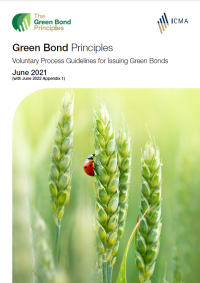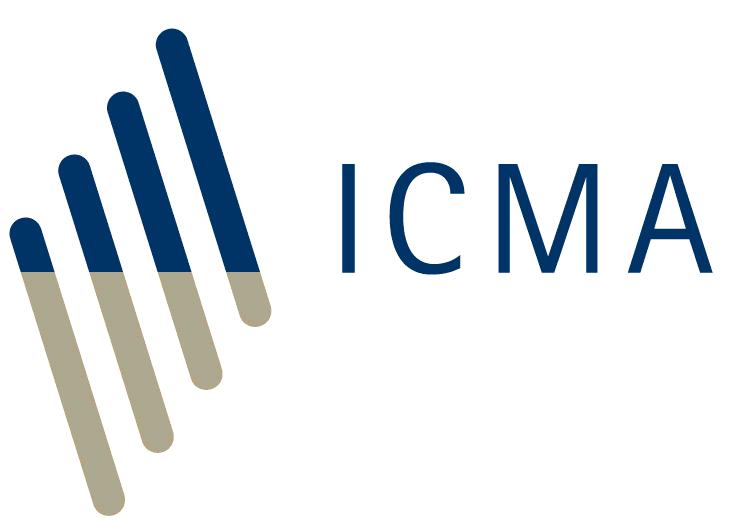 Green bonds enable capital-raising and investment for new and existing projects with environmental benefits. The Green Bond Principles (GBP) seek to support issuers in financing environmentally sound and sustainable projects that foster a net-zero emissions economy and protect the environment. GBP-aligned issuance should provide transparent green credentials alongside an investment opportunity. By recommending that issuers report on the use of Green Bond proceeds, the GBP promote a step change in transparency that facilitates the tracking of funds to environmental projects, while simultaneously aiming to improve insight into their estimated impact. The GBP, updated as of June 2021, are voluntary process guidelines that recommend transparency and disclosure and promote integrity in the development of the Green Bond market by clarifying the approach for issuance of a Green Bond. The GBP recommend a clear process and disclosure for issuers, which investors, banks, underwriters, arrangers, placement agents and others may use to understand the characteristics of any given Green Bond. The GBP emphasise the required transparency, accuracy and integrity of the information that will be disclosed and reported by issuers to stakeholders through core components and key recommendations.
Green bonds enable capital-raising and investment for new and existing projects with environmental benefits. The Green Bond Principles (GBP) seek to support issuers in financing environmentally sound and sustainable projects that foster a net-zero emissions economy and protect the environment. GBP-aligned issuance should provide transparent green credentials alongside an investment opportunity. By recommending that issuers report on the use of Green Bond proceeds, the GBP promote a step change in transparency that facilitates the tracking of funds to environmental projects, while simultaneously aiming to improve insight into their estimated impact. The GBP, updated as of June 2021, are voluntary process guidelines that recommend transparency and disclosure and promote integrity in the development of the Green Bond market by clarifying the approach for issuance of a Green Bond. The GBP recommend a clear process and disclosure for issuers, which investors, banks, underwriters, arrangers, placement agents and others may use to understand the characteristics of any given Green Bond. The GBP emphasise the required transparency, accuracy and integrity of the information that will be disclosed and reported by issuers to stakeholders through core components and key recommendations.
For additional information on how to interpret this guidance especially for its practical application for transactions, as well as in the context of market developments and complementary initiatives, see the Guidance Handbook.
In June 2022, Appendix 1 of the GBP was updated to make a distinction between “Standard Green Use of Proceeds Bonds” (unsecured debt obligation) and “Secured Green Bonds” and to provide further guidance on green covered bonds, securitisations, asset-backed commercial paper, secured notes and other secured structures.
The Green Bond Principles (GBP) 2021 (with June 2022 Appendix 1)
Translations of the Green Bond Principles
Please note that the following translations are related to the 2017, 2018, 2021 and 2021 (with June 2022 Appendix 1) GBP editions, therefore the edition that each translation currently refers to is indicated below. They are being updated with the 2021 changes progressively.
 The Green Project Mapping aims to provide a broad frame of reference by which issuers, investors, underwriters and other bond market participants can relate and evaluate the benefits and contribution of the GBP’s Green Project categories to its own stated five environmental objectives. It also provides a basis for comparison to other green taxonomies and classification systems currently used in the market.
The Green Project Mapping aims to provide a broad frame of reference by which issuers, investors, underwriters and other bond market participants can relate and evaluate the benefits and contribution of the GBP’s Green Project categories to its own stated five environmental objectives. It also provides a basis for comparison to other green taxonomies and classification systems currently used in the market.
 This document aims to function as a pre-issuance checklist for issuers considering issuing Green Bonds and to give guidance on the steps for establishing a Green Bond framework as recommended by the Green Bond Principles (GBP). Links to relevant sections in the GBP and to different supporting documents (e.g., the Harmonised Framework for Impact Reporting, the Climate Transition Finance Handbook (CTFH), the Guidelines for External Reviews, etc.) have been inserted for ease of reference. It is intended to be a pragmatic and condensed tool for issuers and for investors. Also included are some common questions that the external review providers may assess pre-issuance. The 2023 version includes references to ”just transition” considerations. Issuers are also encouraged to complete the Green Bond information template that gives a summary reflecting the main characteristics of a Green Bond and illustrating its key features in alignment with the core components of the GBP. This contributes to market transparency and clarifies issuers’ alignment with the Principles. Completed templates can be made available in the Sustainable bond issuers database.
This document aims to function as a pre-issuance checklist for issuers considering issuing Green Bonds and to give guidance on the steps for establishing a Green Bond framework as recommended by the Green Bond Principles (GBP). Links to relevant sections in the GBP and to different supporting documents (e.g., the Harmonised Framework for Impact Reporting, the Climate Transition Finance Handbook (CTFH), the Guidelines for External Reviews, etc.) have been inserted for ease of reference. It is intended to be a pragmatic and condensed tool for issuers and for investors. Also included are some common questions that the external review providers may assess pre-issuance. The 2023 version includes references to ”just transition” considerations. Issuers are also encouraged to complete the Green Bond information template that gives a summary reflecting the main characteristics of a Green Bond and illustrating its key features in alignment with the core components of the GBP. This contributes to market transparency and clarifies issuers’ alignment with the Principles. Completed templates can be made available in the Sustainable bond issuers database.

































